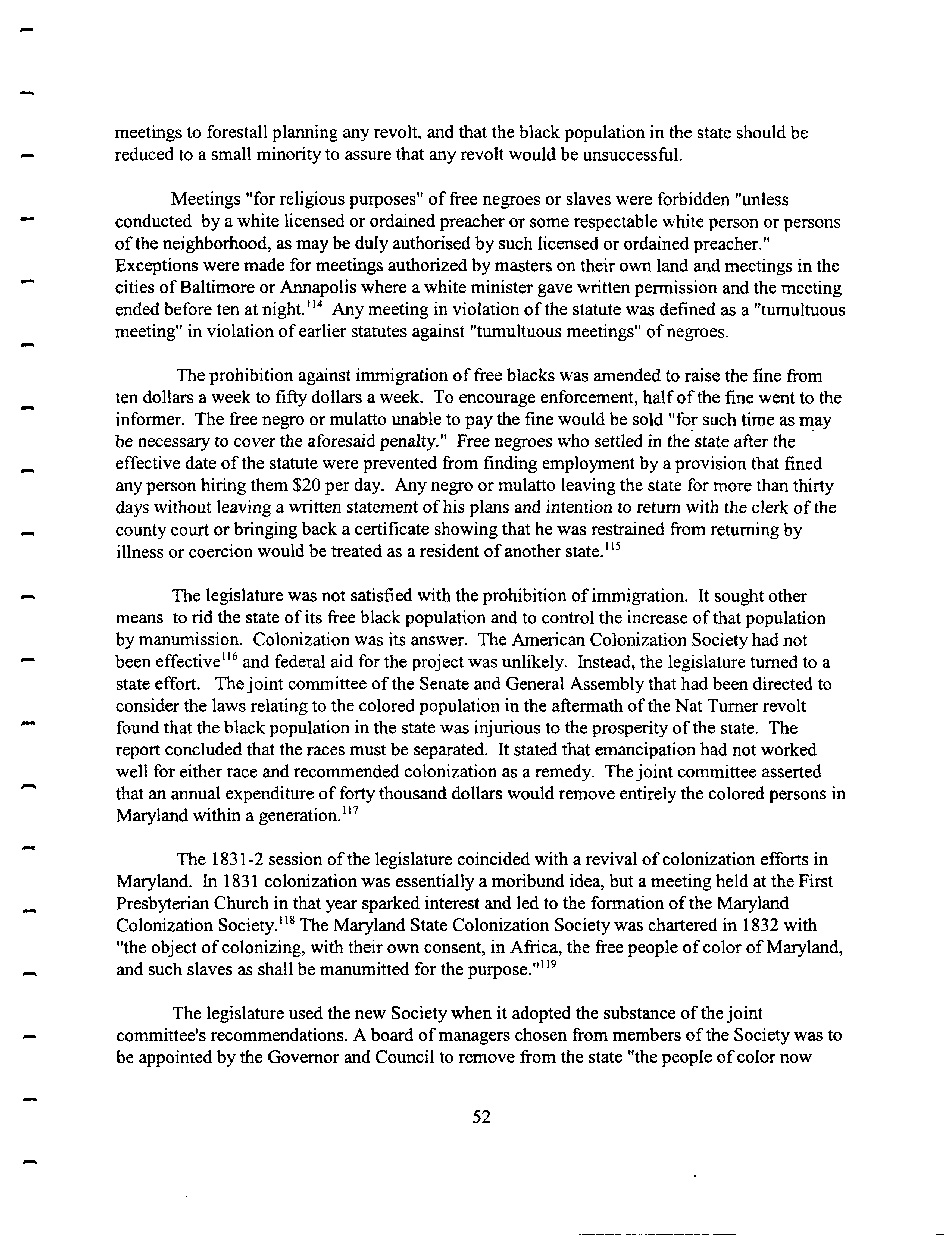|
meetings to forestall planning any revolt, and that the black population in the state should be
reduced to a small minority to assure that any revolt would be unsuccessful.
Meetings "for religious purposes" of free negroes or slaves were forbidden "unless
conducted by a white licensed or ordained preacher or some respectable white person or persons
of the neighborhood, as may be duly authorised by such licensed or ordained preacher."
Exceptions were made for meetings authorized by masters on their own land and meetings in the
cities of Baltimore or Annapolis where a white minister gave written permission and the meeting
ended before ten at night."4 Any meeting in violation of the statute was defined as a "tumultuous
meeting" in violation of earlier statutes against "tumultuous meetings" of negroes.
The prohibition against immigration of free blacks was amended to raise the fine from
ten dollars a week to fifty dollars a week. To encourage enforcement, half of the fine went to the
informer. The free negro or mulatto unable to pay the fine would be sold "for such time as may
be necessary to cover the aforesaid penalty." Free negroes who settled in the state after the
effective date of the statute were prevented from finding employment by a provision that fined
any person hiring them $20 per day. Any negro or mulatto leaving the state for more than thirty
days without leaving a written statement of his plans and intention to return with the clerk of the
county court or bringing back a certificate showing that he was restrained from returning by
illness or coercion would be treated as a resident of another state.115
The legislature was not satisfied with the prohibition of immigration. It sought other
means to rid the state of its free black population and to control the increase of that population
by manumission. Colonization was its answer. The American Colonization Society had not
been effective116 and federal aid for the project was unlikely. Instead, the legislature turned to a
state effort. The joint committee of the Senate and General Assembly that had been directed to
consider the laws relating to the colored population in the aftermath of the Nat Turner revolt
found that the black population in the state was injurious to the prosperity of the state. The
report concluded that the races must be separated. It stated that emancipation had not worked
well for either race and recommended colonization as a remedy. The joint committee asserted
that an annual expenditure of forty thousand dollars would remove entirely the colored persons in
Maryland within a generation.117
The 1831-2 session of the legislature coincided with a revival of colonization efforts in
Maryland. In 1831 colonization was essentially a moribund idea, but a meeting held at the First
Presbyterian Church in that year sparked interest and led to the formation of the Maryland
Colonization Society.118 The Maryland State Colonization Society was chartered in 1832 with
"the object of colonizing, with their own consent, in Africa, the free people of color of Maryland,
and such slaves as shall be manumitted for the purpose."119
The legislature used the new Society when it adopted the substance of the joint
committee's recommendations. A board of managers chosen from members of the Society was to
be appointed by the Governor and Council to remove from the state "the people of color now
52
�
|

